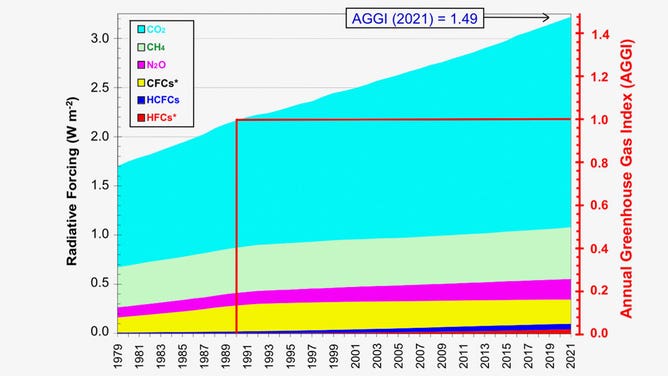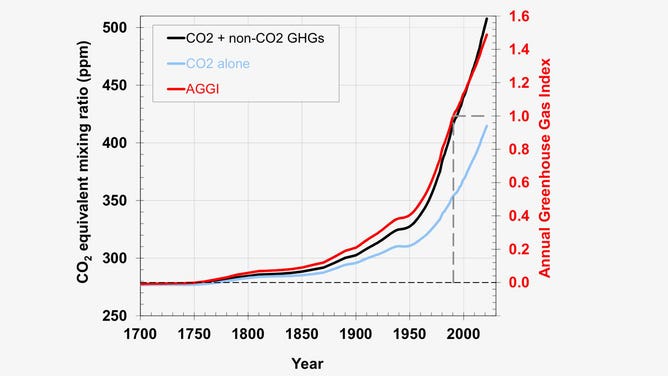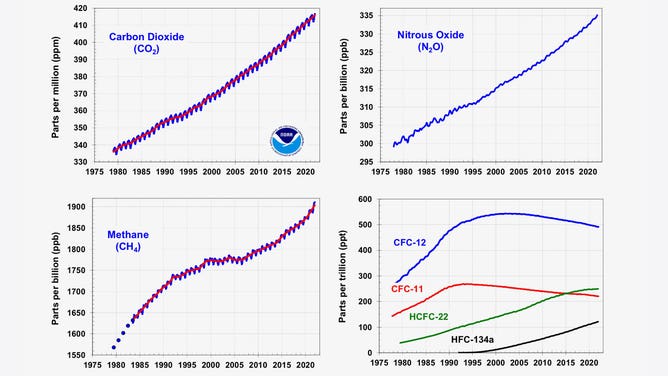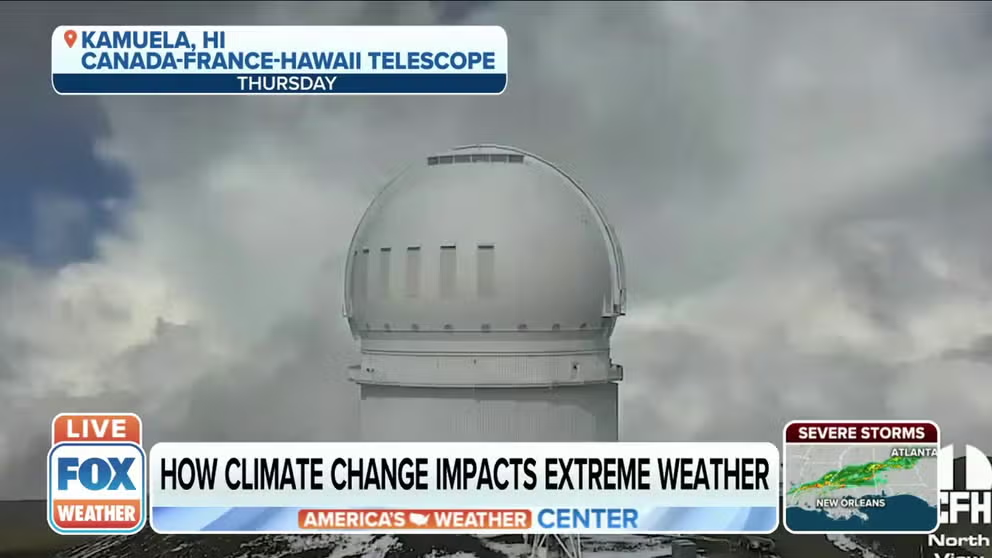Heat trapped by greenhouse gases reached highest level yet in 2021, scientists say
NOAA’s Annual Greenhouse Gas Index finds carbon dioxide remains biggest culprit of climate change
How climate change impacts extreme weather
Katharine Hayhoe, a climate scientist, talks how climate change impacts extreme weather.
Greenhouse gases emitted by human activities trapped much more heat in 2021 than they did three decades ago, according to scientists.
The National Oceanic and Atmospheric Administration released an update to its Annual Greenhouse Gas Index on Monday. The index is used to provide a measurement of the amount of heating greenhouse gases are causing.
2021 WAS WORLD'S 6TH-WARMEST YEAR ON RECORD
In 2021, the index reached a value of 1.49, which is 49% more than 1 value that is assigned to 1990 – the year of the Kyoto Protocol, one of the earliest binding climate change agreements signed by 192 countries. The value of 0 is assigned to the beginning of the industrial revolution in 1750.

This graph depicts the relative contributions of the major greenhouse gas pollutants to global warming, in watts per square meter along the left axis. The NOAA Annual Greenhouse Gas Index (AGGI) is shown on the right axis.
(NOAA Global Monitoring Laboratory)
Carbon dioxide levels
According to scientists, carbon dioxide is the most abundant of the green greenhouse gases and grew by 2.6 parts per million last year. The level has risen by 61 ppm since 1990, and accounts for 80% of the increased heat shown in the AGGI.
HOW TO WATCH FOX WEATHER ON YOUR TV
"CO2 is the main player because it stays in the atmosphere and oceans for thousands of years and it is by far the largest contributor to global warming," said Pieter Tans, senior scientist at NOAA’s Global Monitoring Laboratory.

This graph shows the increasing warming influence over time of CO2 and non-CO2 greenhouse gases, in CO2 equivalents, on the left axis. The corresponding increase in the AGGI is shown on the right axis.
(NOAA Global Monitoring Laboratory)
Methane sources still not clear
Methane, or CH4, is another greenhouse gas that drives climate change, but scientists are still trying to understand what is causing its increase.
Scientists said CH4 levels grew by 16.9 parts per billion in 2021 – the fastest observed increase since the early 1980s.
The nature of its increase is important to understand because it warms the earth 30 to 90 times more than an equivalent amount of carbon dioxide. However, it stays in the atmosphere a much shorter amount of time than CO2 – decades compared to millennia.
GET THE LATEST EPISODE OF THE FOX WEATHER UPDATE PODCAST
According to scientists, the increased methane may be coming less from fossil fuels and more from wetlands, agriculture and landfills.
"We should absolutely target man-made methane emissions -- especially those from fossil fuel -- because it is technologically feasible to control them," said Xin Lan, a scientist from the Cooperative Institute for Research in Environmental Sciences. "If wetlands are giving off more methane because of warming and changes in global precipitation caused by rising CO2 levels, that's something we can't control directly, and that would be very concerning."
Other gases being monitored
There are a total of 19 greenhouse gases that are monitored by scientists. While carbon dioxide and methane make up the bulk of these gases in the atmosphere, another one called nitrous oxide, or N2O, comes in third.
According to scientists, N2O levels are primarily the result of the use of fertilizer for agriculture.
CLIMATE CHANGE MIGHT BE KEEPING YOU FROM A GOOD NIGHT’S SLEEP, STUDY FINDS
"We can find alternative energy sources to replace fossil fuels, but cutting emissions associated with producing food is a very difficult task," said Stephen Montzka, the GML scientist who leads the AGGI report each year.
The remaining 16 greenhouse gases make up about 4% of heat that has been trapped since 1750, according to scientists.

Global average abundances of the major, well-mixed, long-lived greenhouse gases - carbon dioxide, methane, nitrous oxide, CFC-12 and CFC-11 - from the NOAA global air sampling network since the beginning of 1979 are depicted here.
(NOAA Global Monitoring Laboratory)
